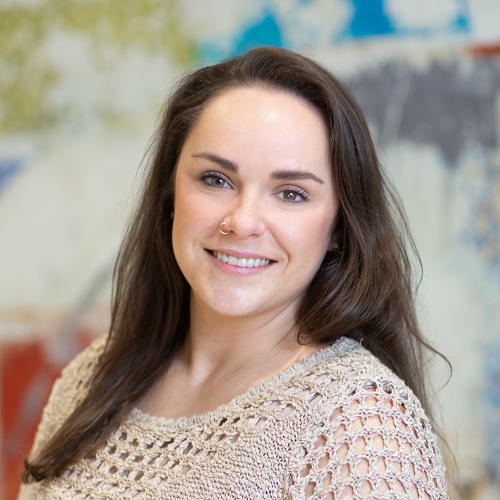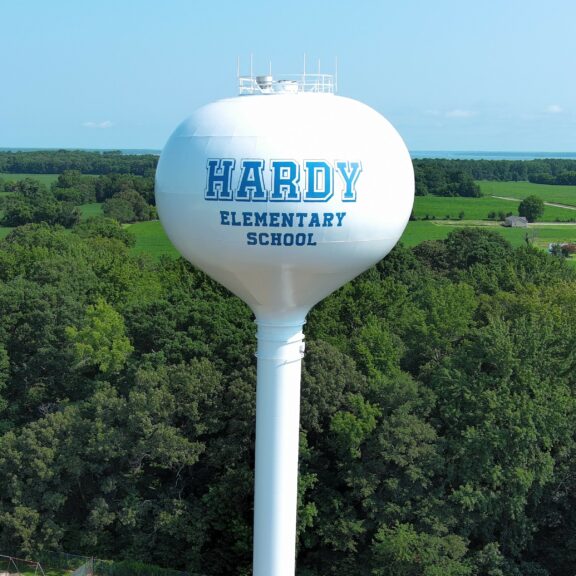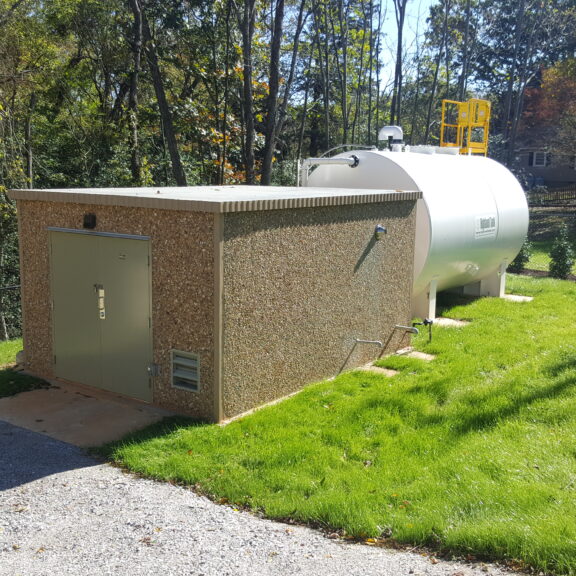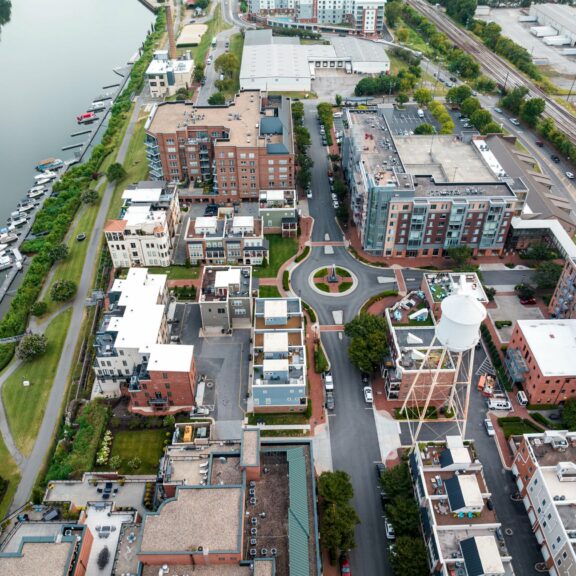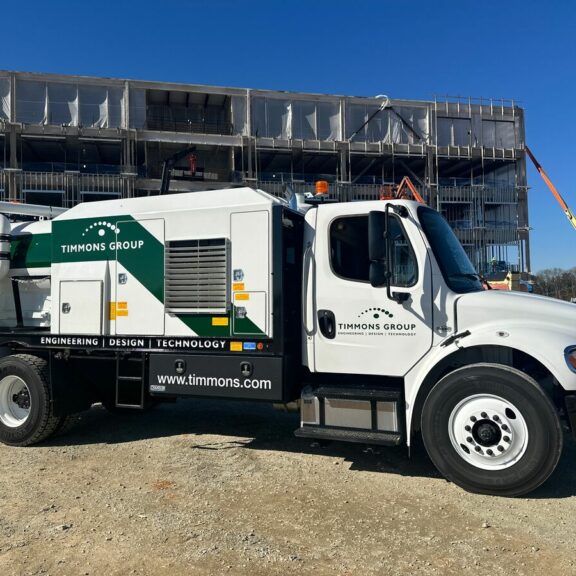This blog post is part of our week-long Women in Engineering celebration! Join us in thanking women in civil engineering for their dedicated work and in welcoming future women engineers to the AEC industry.
“I picked up embroidery this year because I wanted to find a new hobby,” Lina said. And didn’t we all. The last year was anything but normal, and many of us were forced into an uncomfortable way of life that included spending more time with ourselves and exploring new Covid-friendly extracurriculars.
Discovering potentials was challenging for a lot of us, but it sounds like Lina got the hang of it pretty quickly. “I got to thinking and realized that embroidery is a perfect extension of my personal as well as professional interests because it’s very aesthetic and artistic and it’s also really technical and precise. It just made sense.”
I caught up with Lina Kim the other week to nerd out about everything from embroidery to water tanks. Our conversation was not shy on discussion topics, but if I’ve gleaned one thing from our chat, it’s that Lina is passionately invested in all things aesthetic and how they translate to her role at Timmons Group.
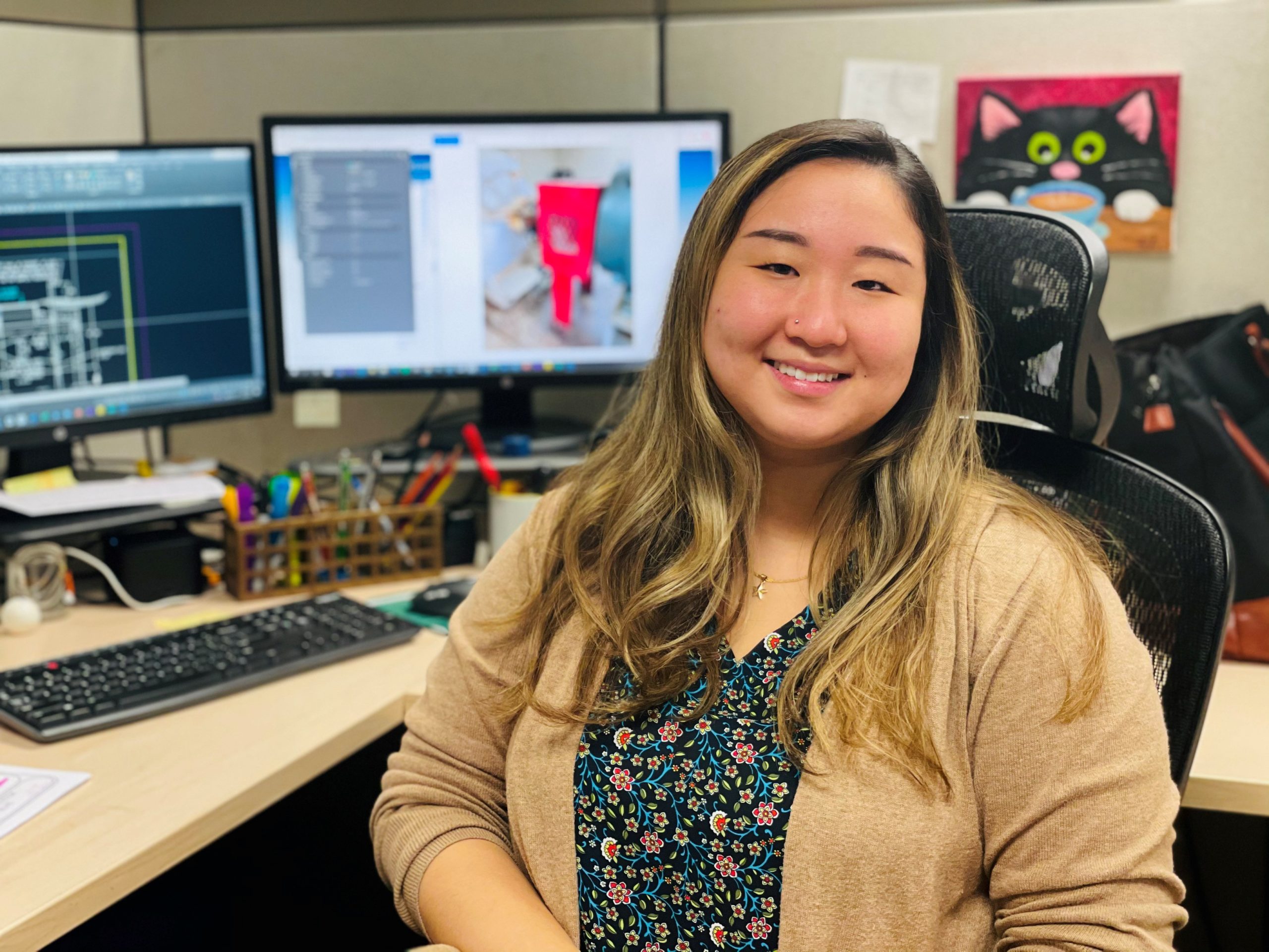
Lina is a Project Engineer II in our Water/Wastewater group. She sits in our Richmond headquarters located on Boulders Parkway. Lina has experience with various facets of the design and construction of water and wastewater linework and pumping systems. She’s knowledgeable in water and sewer modeling and has specific hands-on experience with Civil 3D and Revit 3D modeling. Lina’s team is responsible for water and wastewater design that the public encounters in their everyday lives.
Think about your commute to work (if your commute consists of more than ‘bed to desk’ as many of ours do nowadays): Did you drive by a water tank? Lina’s team is responsible for engineering the way they integrate into our water systems. Did you pass a pump station on the river? Yep, Lina’s team designs those too. What about a water treatment plant? The list goes on. Lina’s role in water and wastewater design is an impeccable culmination of what our infrastructure engineers are responsible for—and what our society relies on.
Lina’s civil engineering role consists mostly of production, so she uses a collection of programs to help her create maps and planning sheets that help her clients visualize a final design. One significant program for Lina’s day-to-day is Esri’s ArcMap. Like her new interest in embroidery, Lina’s expertise in ArcMap is an art. But there’s another reason that these maps and planning sheets are integral to Lina and the engineering community—they’re somewhat of a universal language.
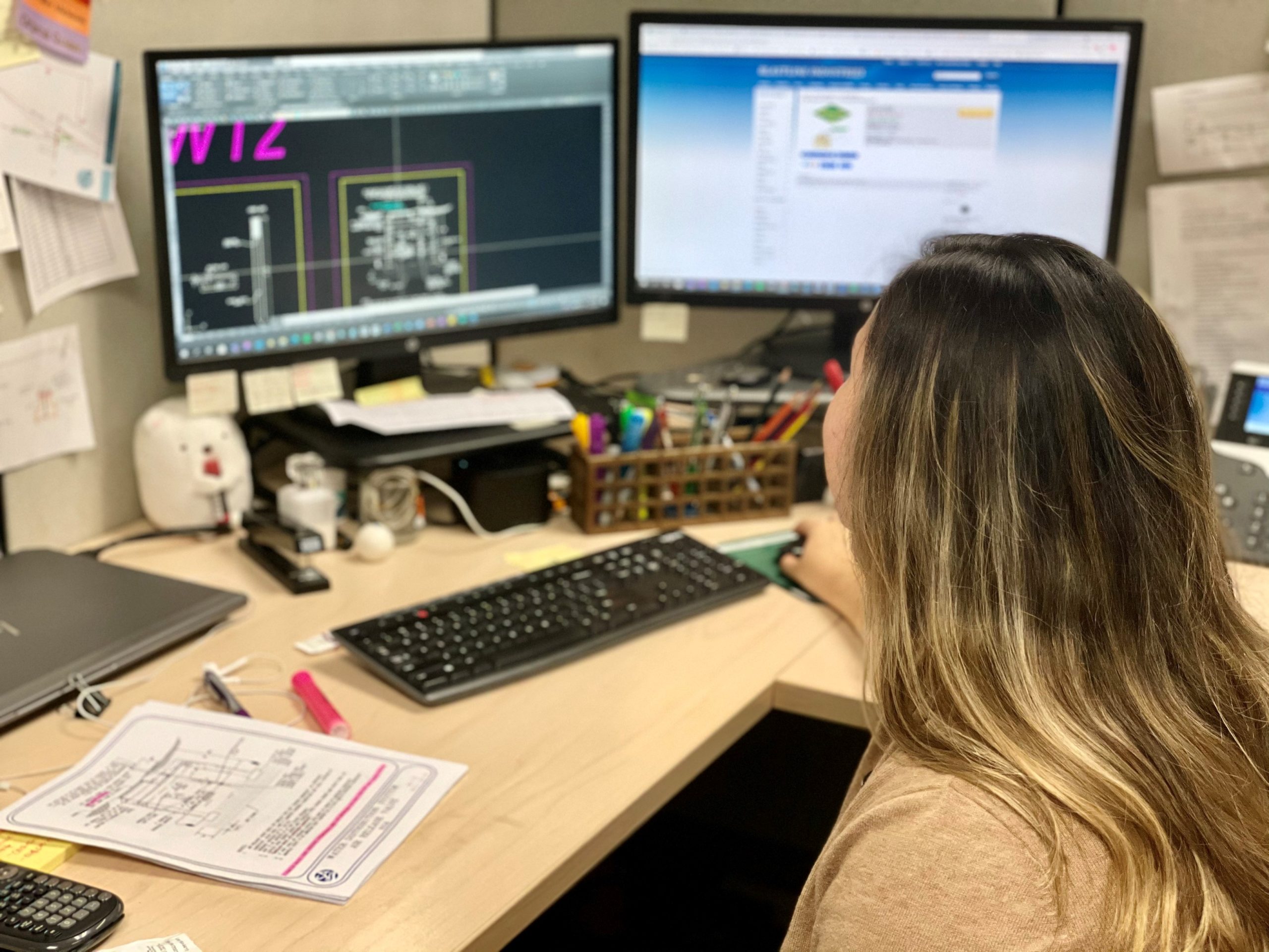
Lina shows me the programs she uses on a daily basis.
“I use Esri ArcMap a lot for my work. We prepare exhibits [aka ‘maps’] because they help convey many aspects of our designs,” Lina explains. “When people see our preliminary designs incorporated on a map, they can more easily understand and visualize the work we do. For example, We can lay out 10,000 feet of proposed sewer piping on an aerial map along with notable features like stream crossings or significant elevation changes with shaded relief imagery to help clients understand the design process from a different perspective than technical construction drawings can convey alone. So, once we run our data and create that exhibit, we can take it to our client and say, ‘Here is a visual representation of the parameters that influenced our design.’”
Lina’s work is transferrable and understandable even by those who aren’t experts in ArcMap. In the same way that ‘a picture is worth a thousand words,’ Lina’s maps tell the universally comprehensible story of a project.
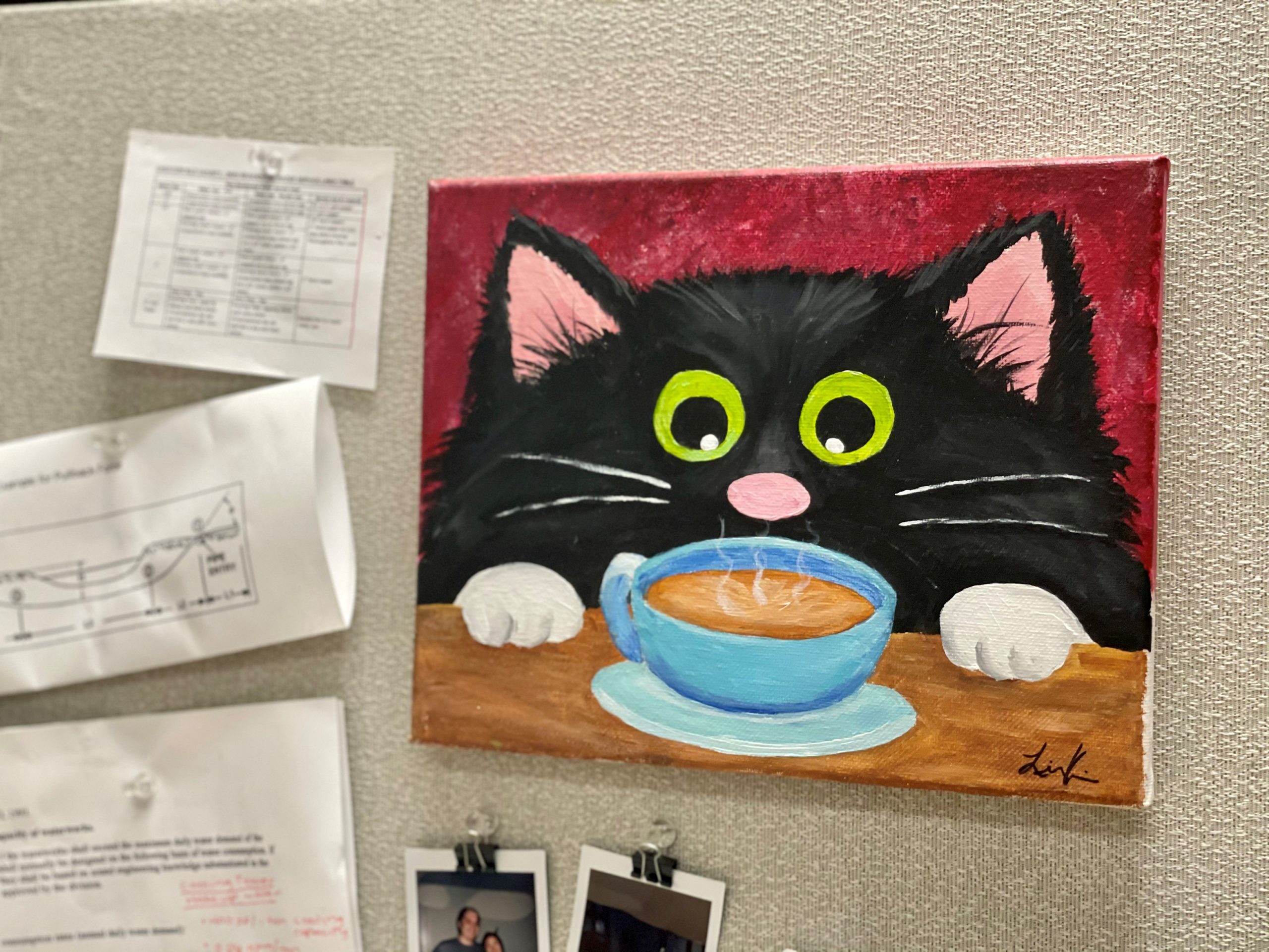
Lina’s artwork from a paint night hangs in her office space.
Lina was born in New York and her parents immigrated from Korea in the early 90’s. They moved to Virginia Beach early in her childhood and she considers VB her hometown. Art and STEM-based education were very important in her upbringing, and she says that her parents’ investment in her schooling has defined her career as a civil engineer. Her creative side was supported through art programs offered by the local visual arts schools and she also attended a Math and Science Magnet program in high school which helped her decide her future career path.
Prior to Lina’s civil engineering path, she was enrolled in the School of Architecture at Virginia Tech. Having been involved in art and STEM in her high school career, she was very familiar with the ins and outs of design culture and she went to college with architecture in mind. About a year and a half into the program, Lina explored new options that could help take her technical interests in a slightly different direction.
“I focused a lot of my younger schooling days on visual arts, so I really appreciated the aesthetics of the world around me. I’ll always be thankful that I started off in architecture, as it eventually opened my eyes to civil engineering as a career,” Lina says. “I wanted to do something that still incorporated design, but about a year and a half into my major, I realized the potential of exploring disciplines within civil engineering and how I could really hone in on my analytical and problem-solving skills. While I still really enjoyed architectural design and still do today, I needed to find something that was more of my calling, and I think water/wastewater engineering was just that.”
That unique right-and-left-side-brained atmosphere is exactly what Lina was looking for. Her typical day to day is challenging because she spends a lot of time working in an array of design programs. She says staying up to date with each program and knowing its technological capabilities goes hand-in-hand with her ability to think creatively when putting a program to use. “Sure, we use a lot of straightforward formulas and calculations, but a lot of it also reminds me of solving a video game puzzle – I literally think of Legend of Zelda dungeon maps sometimes – there’s a certain kind of beauty even in very technical-seeming things,” she says.
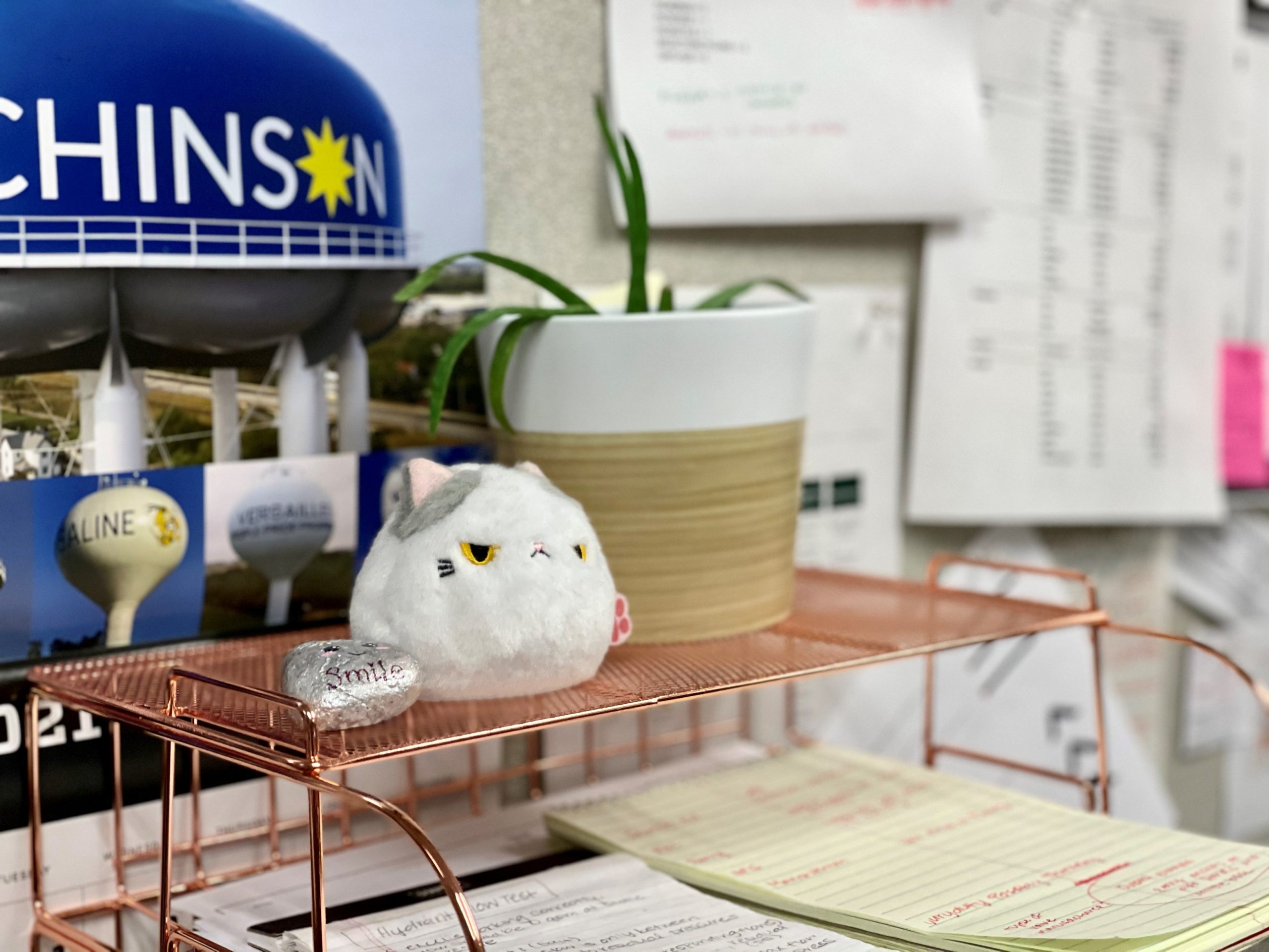
Lina’s office space is donned with quirky bits of her personality like a plush angry cat next to a rock that reads ‘smile.’
Lina has been with the firm for three years and in her time, she’s worked on projects with a variety of people that have helped her grow into her role. “I’ve worked on large scale and high-profile projects spanning miles of piping, but I’ve also worked on smaller projects for municipalities like helping to update their water and sewer standard details. As I’ve spent time working with each person in my group, I have gained a lot from each of their talents and work styles. Our team is like a melting pot and we work really well together. We’re all unique and we each bring something different to the table. It’s definitely hard work but it’s also really nice to be able to be able to look forward to seeing your coworkers every day and having inside jokes and fun times together too”.
As Lina continues to develop her expertise in water/wastewater design, she’s reminded of her roots in art and STEM.
“It’s crazy because we honestly do learn something new every day,” Lina says about her work in water/wastewater. “I’m constantly making connections between knowledge from my prior experiences to new information. That lightbulb moment is a really great feeling because it reiterates how much this career path will continue to offer for my future.”
In her downtime, Lina spends time gawking over how cute her cats are (Theo and Ollie), planning beach-oriented vacations, and hunting down unique ingredients in the grocery store to create one-of-a-kind meals.
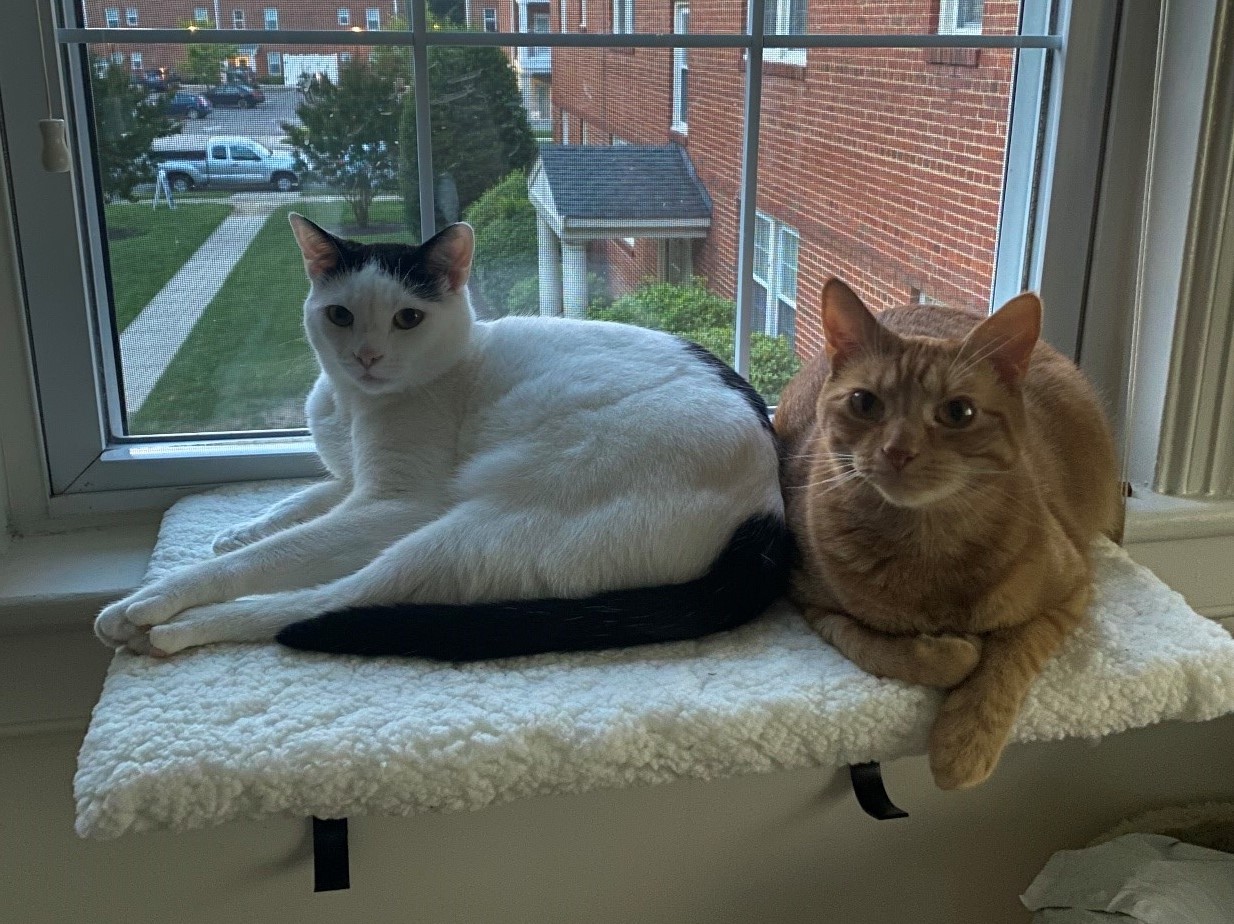
Interested in joining Lina and the Water/Wastewater team? Learn more about our open positions at timmons.com/careers.
